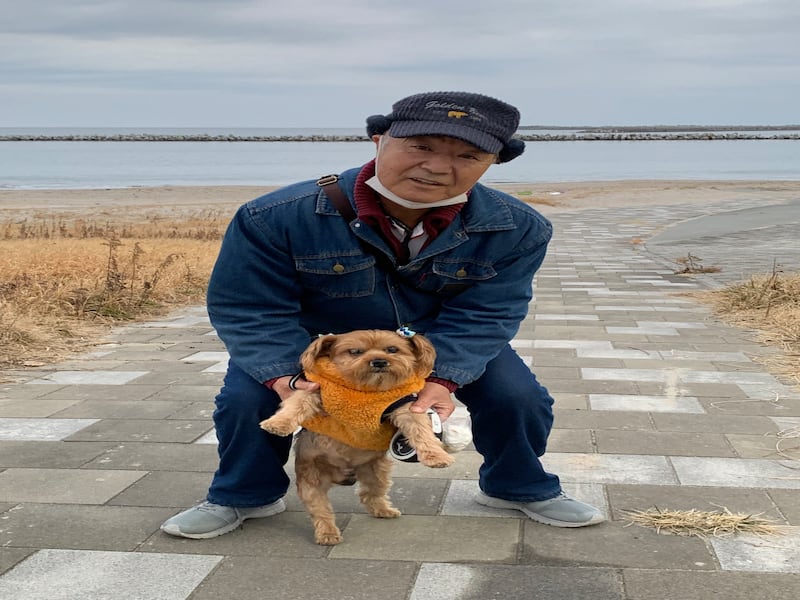From the port of Ukedo, Takeshi Takano can see cranes hovering over the metallic corpse of the Fukushima Daiichi nuclear plant a few miles south.
Twelve years ago, a tsunami destroyed this port, along with dozens of communities on Japan’s northeast coast, killing thousands of people and triggering a meltdown at the plant. Radiation seeped into the Pacific, forcing fishermen like Mr Takano to stay at home. “Our fish was poisoned and nobody would buy it,” he recalls.
The ban on local seafood was not fully lifted until 2020; the port finally reopened a year later. Now the fishermen face what they see as another existential threat. The plant operator, Tokyo Electric Power Co (Tepco), is about to begin releasing 1.3 million tons of treated contaminated wastewater into the Pacific. The plan, approved by the government, has infuriated them. “We’ve only just got back on our feet, so how can we accept this,” asks Mr Takano bitterly.
Ringed by lush fields and forests, Ukedo’s fate, like much of the northeast, has been shaped by the disaster of March 11th, 2011. Local people who survived the earthquake and tsunami fled, along with 21,000 residents, from the nearby town of Namie after 15-metre waves overwhelmed the plant, disabling its cooling system and causing three reactor cores to melt. A government evacuation order was lifted in 2017, but most of the town’s residents have stayed away.
READ MORE
Tepco engineers have battled to clean up from the disaster. After a harrowing few weeks, they stabilised the ruined reactors with water, later adding a treatment plant to filter it. Cold shutdown (meaning water that keeps the molten fuel cool remains below boiling point) was announced in late 2011, and decommissioning began in 2013. The biggest challenge remains extracting about 880 tons of molten fuel from the three ruined reactors.
But a byproduct of the shutdown – contaminated water – has proved a huge headache. Storage tanks holding the treated water have sprouted up around the plant site, which Tepco says has almost run out of space. The water is filtered to remove the most dangerous isotopes, but critics say the filter system is flawed, and residues of harmful chemicals, including tritium, a radioactive form of hydrogen, remain.
A government advisory panel concluded in 2020 that sea discharge and vapour release were the only practical options but there has been fierce pushback. China, South Korea and a group of Pacific islands have protested. Environmentalists want more testing and Greenpeace says Tepco must continue to store the water. This will give more time to develop better filtering technology and “allow the threat from tritium to diminish naturally,” says the environmental watchdog.

The head of the Tepco division promoting decommissioning insists the water will be safe before it is slowly dumped over the next 40 years, roughly the amount of time it will take to lay the plant to rest. “All of the water on site has undergone treatment,” said Junichi Matsumoto, though he adds that much of the treated water still exceeds national regulatory standards and will be “re-purified”.
He added: “We have made our work open and public and ensured the highest degree of transparency.”
Fukushima Prefecture – once one of Japan’s breadbasket regions – is desperate to rescue the reputation of local food. It has analysed about 260,000 food samples since the disaster began, and says no fruit or vegetables have exceeded the government standard for contamination since 2013. Journalists were shown a demonstration in February when locally caught fish was tested in 11 cylindrical detector machines. All but one species of fish caught off Fukushima have consistently passed the testing regime.
Official estimates for Fukushima’s decommissioning are eight trillion yen ($73 billion), but that excludes compensation to evacuees and fishermen, decontamination of the surrounding countryside and a host of other as-yet unforeseen costs. The Japan Center for Economic Research, a think tank, calculates the final clean-up cost at up to 80 trillion yen, ($730 billion). Some experts believe even that may be an underestimate.
The money will be found, but the government will have a much harder time convincing fishermen that the water discharge, which could begin in the spring, will not ruin their industry.
“We’ve had a terribly difficult 12 years and the price of our produce is just starting to rebound,” says Hirokazu Ito, who operates a trawler with his two sons in Soma, up the coast from Ukedo. “Even now, our fugu (puffer fish) can’t be sold. How could we not be against the Tepco plan?
“My grandson has just started coming out in the boat. What future will there be for him?”
















